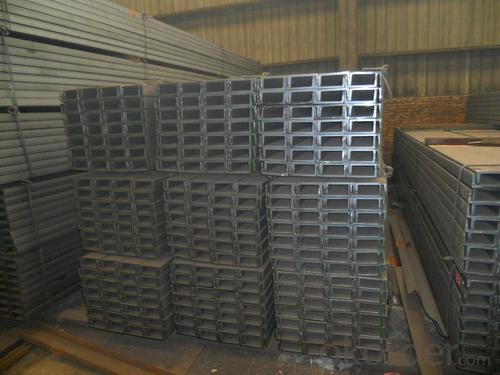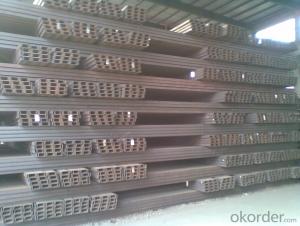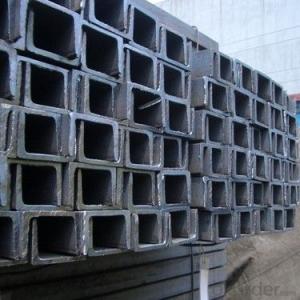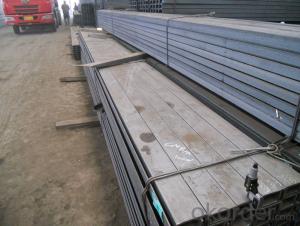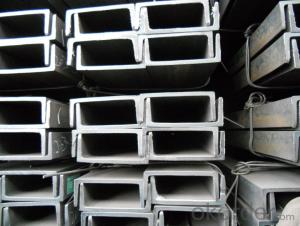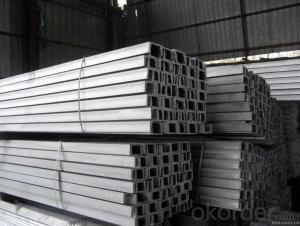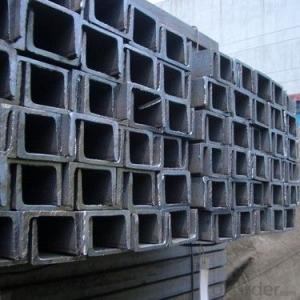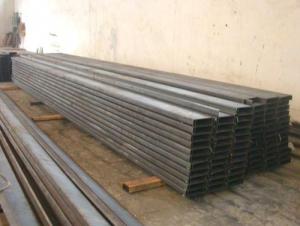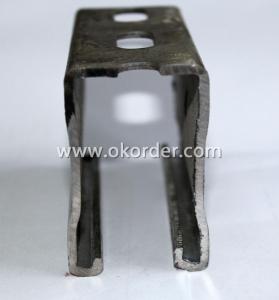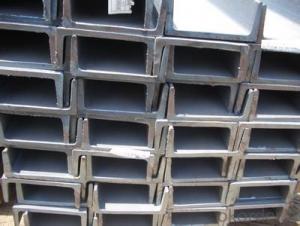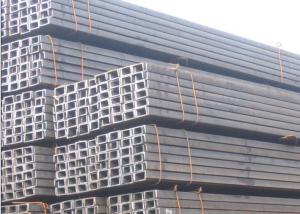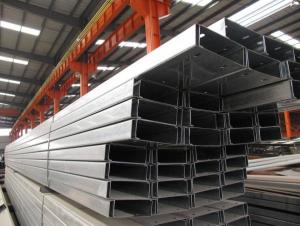JIS SS400 Steel Channel with High Quality 75mm
- Loading Port:
- Tianjin
- Payment Terms:
- TT OR LC
- Min Order Qty:
- 25 m.t
- Supply Capability:
- 10000 m.t/month
OKorder Service Pledge
OKorder Financial Service
You Might Also Like
JIS SS400 Steel Channel with High Quality 75mm
Product Description:
Standard: JIS
Material: SS400
Length: 6m, 12m
Size:
Size (mm) | Mass (Kg/m) |
75*40*4.0 | 5.60 |
| 75*40*4.5 | 5.85 |
75*40*5.0 | 6.92 |
Package & Delivery of JIS SS400 Steel Channel with High Quality 75mm:
1.The hot rolled channel steel will be packed in bundle with steel wire at each end of every bundle and color marking in order to help the customer to recognize his goods more easily at sight.
2. And the hot rolled channel steel could be loaded into 20ft or 40ft container, or by bulk cargo.If the weight of each bundle reaches more than 3.5 mt, the loading by break bulk cargo should be choosed.When the weight of each bundle reaches less than 3mt, the loading by container should be choosed.
3.As for the transportaion from mill to loading port, the truck will be usually used. And the maximum quantity for each truck is 40mt.
4.All in all, we could do in accordance with customer's request.
Production Flow of JIS SS400 Steel Channel with High Quality 75mm:
1.The steel billet shall be heated in the high temperature furnace.
2. The heated steel billet shall be rolled five to nine times with the aim of shaping the general figure of steel u channel.
3. The rolled steel channel should be put onto the cooling bed to make the temperature low.
4. The JIS Channel should be straighted on the straightener.
5. The straighted steel u channel will be cut into meters by saw, as per customer's requirements.
6. At the last part of production, the channel steel must be tested in order to confirm that the finished products are completely free from crack, pore, slag, scab or fold on the surface.
FAQ:
Q1: Why buy Materials & Equipment from OKorder.com?
A1: All products offered byOKorder.com are carefully selected from China's most reliable manufacturing enterprises. Through its ISO certifications, OKorder.com adheres to the highest standards and a commitment to supply chain safety and customer satisfaction.
Q2: How do we guarantee the quality of our products?
A2: We have established an advanced quality management system which conducts strict quality tests at every step, from raw materials to the final product. At the same time, we provide extensive follow-up service assurances as required.
Q3: How soon can we receive the product after purchase?
A3: Within three days of placing an order, we will arrange production. The shipping date is dependent upon the quatity, how many sizes you want and the plan of production, but is typically 1 month to 2 month days from the beginning of production.
Images of JIS SS400 Steel Channel with High Quality 75mm:
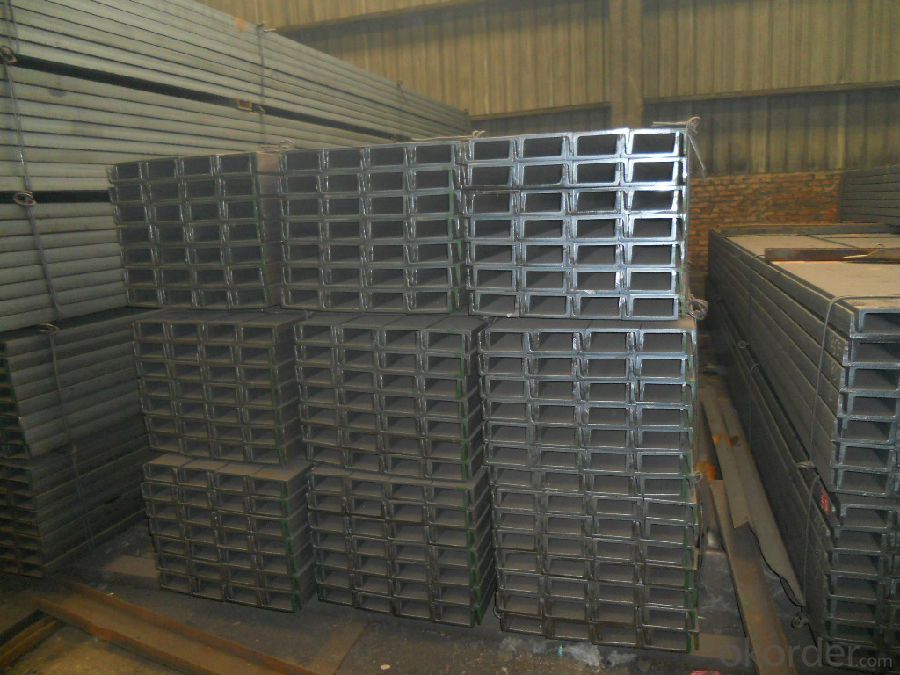

*If you would like to get our price, please inform us the size, standard/material and quantity. Thank you very much for your attention.
- Q: Channel steel, I-steel, round bar, angle steel, Fang Gang price is per ton to count or by rice? How about tons and meters? The formula is best
- Are generally by tons to calculate, according to tons of words directly or weigh the theoretical calculation, which is the theory that the weight per unit volume, volume density of X steel, the density of 7.85 tons per cubic meter.
- Q: What are the different types of surface finishes for steel channels in architectural applications?
- Some common types of surface finishes for steel channels in architectural applications include mill finish, galvanized finish, painted finish, and powder coated finish.
- Q: What is the typical lifespan of steel channels?
- The typical lifespan of steel channels can vary depending on several factors including the quality of the steel used, the environment in which they are installed, and the level of maintenance they receive. However, on average, steel channels can have a lifespan ranging from 20 to 50 years. Steel channels are commonly used in construction and industrial applications due to their durability and strength. They are designed to withstand heavy loads and provide structural support. However, over time, steel channels may be subject to corrosion, wear and tear, and other forms of degradation. The lifespan of steel channels can be extended through regular maintenance and protective measures. This includes routine inspections, cleaning, and applying protective coatings or treatments to prevent corrosion. Additionally, proper handling, installation, and load management can also contribute to prolonging their lifespan. It is important to note that the specific lifespan of steel channels can vary based on the specific conditions they are exposed to. For instance, steel channels installed in coastal areas with high levels of saltwater exposure may experience accelerated corrosion and a shorter lifespan compared to those installed in more inland regions. To determine the expected lifespan of steel channels in a particular application, it is recommended to consult with structural engineers, manufacturers, or industry experts who can provide insights based on the specific requirements and conditions of the project.
- Q: Are steel channels suitable for seismic retrofitting?
- Indeed, seismic retrofitting can be accomplished using steel channels. Due to their exceptional strength and ductility, steel channels are frequently employed in seismic retrofitting endeavors. They prove especially useful in regions prone to significant seismic activity, as they can fortify and bolster existing structures. By absorbing and dispersing seismic forces, steel channels significantly enhance the structural stability and functionality of a building during an earthquake. Moreover, their effortless installation and seamless integration into preexisting structures render them a highly favored choice for seismic retrofitting initiatives. All in all, steel channels present themselves as a dependable and appropriate alternative for seismic retrofitting purposes.
- Q: What does channel specification "MQ-41" mean?
- The raw material for producing channel steel is carbon or low alloy steel billets with a carbon content of not more than 0.25%. The finished channel steel is delivered by hot forming, normalizing or hot rolling. The specifications are expressed in millimeters of height (H) * leg width (b) * waist thickness (d), such as 100*48*5.3, which means waist height is 100 mm, leg width is 48 mm, waist thickness is 5.3 mm channel, or 10# channel steel. The same height of the channel, if there are several different leg width and waist thickness, also need to add a, B, C on the right side of the model to distinguish, such as 25#a, 25#b, 25#c and so on.
- Q: Can steel channels be used in architectural facades?
- Yes, steel channels can be used in architectural facades. Steel channels are versatile and durable, making them suitable for various architectural applications, including facades. They can be used to create a modern and sleek aesthetic, or to add structural support to the facade. Steel channels can be easily fabricated and customized to meet the specific design requirements of the facade, allowing for a wide range of possibilities in terms of shape, size, and finish. Additionally, steel channels provide excellent strength and stability, making them capable of withstanding the environmental stresses and loads typically encountered in architectural facades.
- Q: What are the load capacities of steel channels?
- The load-carrying capabilities of steel channels depend on various factors, including the channel's dimensions, the type of steel employed, and the manner in which the load is applied. Due to their strength and durability, steel channels find widespread utilization in construction and engineering projects. Determining the load capacity of a steel channel involves engineering calculations and analysis. Engineers take into account parameters such as the channel's yield strength, ultimate strength, and moment of inertia to ascertain its load-bearing capacity. The yield strength of the steel establishes the maximum stress the channel can endure before undergoing permanent deformation. Conversely, the ultimate strength denotes the maximum stress the channel can withstand before experiencing complete failure. These values are generally provided by the manufacturer or can be acquired from engineering reference materials. Furthermore, the load capacity of a steel channel is influenced by its dimensions. Larger cross-sectional areas in channels generally lead to higher load capacities as they enable the load to be distributed across a larger surface area. Moreover, the channel's shape and design, including the presence of flanges, may impact its ability to bear loads. It is crucial to note that load capacities for steel channels can significantly vary depending on the specific application and the required safety factors. Aspects such as the load type (e.g., static or dynamic), channel length, and support conditions also contribute to determining the load capacity. To ensure structural integrity and safety, it is advisable to consult a structural engineer or refer to industry standards and codes when determining the load capacities of steel channels for a particular application.
- Q: What are the different insulation options for steel channels?
- Some different insulation options for steel channels include foam insulation, fiberglass insulation, and mineral wool insulation. These materials can help to reduce heat transfer and improve energy efficiency in buildings or structures that use steel channels.
- Q: Can steel channels be used in the construction of railings or handrails?
- Yes, steel channels can be used in the construction of railings or handrails. Steel channels are often chosen for their strength, durability, and versatility, making them suitable for supporting and securing railings or handrails in various construction projects.
- Q: What are the different methods for cutting steel channels?
- There are several methods for cutting steel channels, each with its own advantages and disadvantages. Some of the most common methods include: 1. Sawing: This method involves using a circular saw or bandsaw to cut through the steel channel. It is a versatile method that can be used for both straight cuts and angled cuts. However, it can be time-consuming and may produce a rough finish that requires further processing. 2. Shearing: Shearing is a process that involves using a specialized machine called a shear to cut through the steel channel. It is a fast and efficient method that produces clean and precise cuts. However, it is limited to straight cuts and may not be suitable for thicker or larger steel channels. 3. Cutting torch: A cutting torch uses a high-temperature flame to melt and cut through the steel channel. It is often used for thicker or heavier steel channels and can produce smooth and precise cuts. However, it requires skilled operators and can be more time-consuming than other methods. 4. Plasma cutting: Plasma cutting involves using a plasma torch to cut through the steel channel. It is a fast and accurate method that can be used for both straight cuts and intricate shapes. However, it requires specialized equipment and may produce a heat-affected zone that requires further processing. 5. Waterjet cutting: Waterjet cutting uses a high-pressure stream of water mixed with abrasive material to cut through the steel channel. It is a precise and versatile method that can produce clean and accurate cuts in various materials and thicknesses. However, it can be expensive and may require skilled operators. 6. Laser cutting: Laser cutting uses a focused laser beam to cut through the steel channel. It is a highly precise method that can produce intricate cuts with minimal heat-affected zone. However, it can be costly and may require specialized equipment and operators. It is important to consider the thickness, size, and complexity of the steel channel, as well as the desired finish and the available resources, when choosing the appropriate method for cutting.
Send your message to us
JIS SS400 Steel Channel with High Quality 75mm
- Loading Port:
- Tianjin
- Payment Terms:
- TT OR LC
- Min Order Qty:
- 25 m.t
- Supply Capability:
- 10000 m.t/month
OKorder Service Pledge
OKorder Financial Service
Similar products
Hot products
Hot Searches
Related keywords



